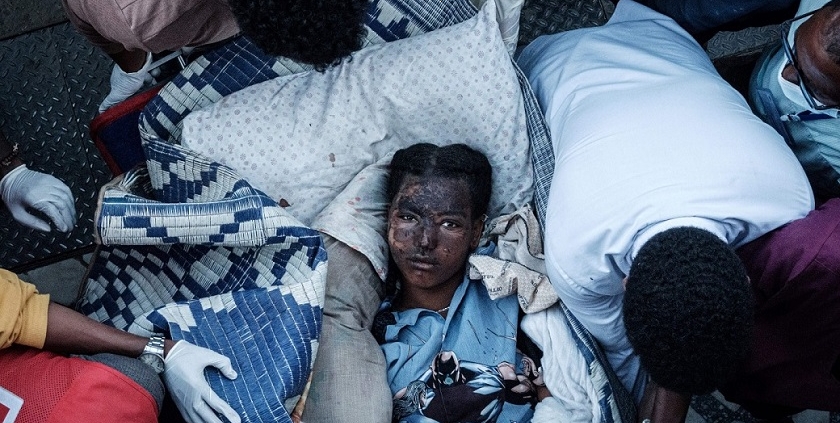Famine Alert in Northern Ethiopia; Government Denies Crisis
By Gunnar Zachrisen | Panorama News
Fifteen months after a peace deal ended the Tigray war in northern Ethiopia, the region faces another major challenge: widespread malnutrition and hunger. “It is reminiscent of 1984,” warn local authorities.
“The situation is catastrophic,” an experienced Tigray scientist and agricultural expert told Panorama news.
Over 200 people, mostly children, have starved to death in the small town of Edaga Arbi since July, local Tigrayans reported to authorities this week. A further 16 have died in the town of Adwa.
World TV viewers will remember the famine catastrophe of 1984, in which Tigray was particularly hard hit.
Now, Tigray’s administrative chief, Getachew Reda, is warning of a famine on par with that of 40 years ago. At year’s end, his administration said as many as 860 people in the region had died of starvation since September alone.
Denying Hunger
Internally, in Ethiopia, discussing hunger is politically controversial. The Federal Government in Addis, led by Nobel Peace Prize laureate Abiy Ahmed, denies that Tigray is experiencing a hunger situation – and assures that it can handle the situation.
Speaking to the BBC’s correspondent, a local doctor this week confirmed the seriousness of the hunger alarm and the hopelessness due to a lack of resources to help.
“I find that people are dying all the time. As a doctor, I possess knowledge and expertise but lack ways to help them. It feels pointless,” said Desta Kahsay, a doctor in the town of Shire.
He believes that many of the deaths could have been avoided if only the resources had been present.
A New Vulnerability
The war-torn region, which was known for its resilience before the war, is characterized by a new vulnerability, explains agricultural geographer and Tigray connoisseur Jan Nyssen of Ghent University in Belgium to Panorama news.
The situation is even worse than what the media is reporting, because all media are based on official sources, he believes.
“There is widespread malnutrition in the population. This leads to generally impaired health, which in the next step may cause people to die from other causes. This is not evident in the official statistics as ‘death by starvation.'”
He believes the main reasons for the new, serious hunger situation are the war’s weakening of the region’s resources and lack of rainfall, in combination with a marked weakening in the organization of Tigrayan society.
In addition, there is an almost complete absence of emergency assistance. For five months last year, USAID and the World Food Program failed to deliver aid due to a revelation of widespread aid fraud at the federal level.
An Extreme Hopelessness and Sadness
The professor, who has had Tigray as a field of research, has a large network of informants and research colleagues in many different parts of the region.
“There is an extreme hopelessness and sadness. Friends and farmers in Tigray say they are struggling in the wake of the collapse of old systems. They must try out new and more independent agricultural strategies,” says Nyssen.
In the cities, there is huge unemployment, and real wages have fallen dramatically, his sources report.
“The many internally displaced people lead to overpopulation. Public services function poorly. The number of beggars is sky-high. A foreign expert – with many decades of experience in Tigray – said, ‘I’ve never seen Tigray like this,'” Nyssen recounted.
UN: 4 Million at Risk of Hunger
The UN Office for Humanitarian Affairs (OCHA) also issues a warning of great needs and lack of funding for the crisis. In total, four million people in the regions of Amhara, Oromia, Afar, and Tigray are now at extreme risk of hunger, the UN agency said on Wednesday this week.
“Several overlapping crises have seriously weakened people’s ability to cope with climatic shocks like drought. This leaves millions of people vulnerable and at risk of falling even deeper into distress and suffering,” OCHA stated.







 Reuters
Reuters

 Wikipedia
Wikipedia Top10VPN
Top10VPN
Leave a Reply
Want to join the discussion?Feel free to contribute!